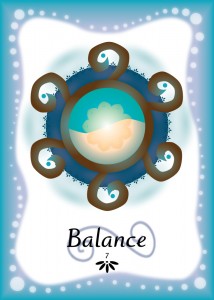 Caidin’s National Geographic Kids arrived the other day. His Aunt Maria gave him a subscription, and he waits eagerly each month for the magazine. He goes through and reads every story, every highlight, out loud.
Caidin’s National Geographic Kids arrived the other day. His Aunt Maria gave him a subscription, and he waits eagerly each month for the magazine. He goes through and reads every story, every highlight, out loud.
As he read through this month’s magazine he said ‘did you know that eating cheese after a meal slows tooth decay?’ ‘Why,’ I asked. ‘I don’t know,’ he said. He continued ‘Did you know that rock candy was once used as a medicine?’ ‘How so,’ I asked. ‘I don’t know,’ he said and added ‘did you know that most farmed carrots used to be purple?’ ‘No, I didn’t,’ I said, ‘why was that?’ Again he said ‘I don’t know.’
It got me thinking, first that I was a little disappointed in National Geographic Kids, but second, this is something most adults do with kids. We say things but we don’t explain. It would have been so much more interesting and educational if Nat Geo had actually explained the why, what and how behind these interesting facts. Of course Caidin and I will now search to find the answers, but, I don’t think that was the plan when Nat Geo put together their ‘bet you didn’t know’ section.
As I said, adults do this with kids all the time. We give directions like ‘stop doing that’ or ‘don’t touch that’ but we don’t follow through with the why, or the what-for. As adults we question things that people tell us. If someone says to us ‘don’t touch that;’ if we can’t figure it out from the setting we ask ‘why?’ Kids on the other hand, don’t always ask that question. They simply hear, or don’t hear what we have to say.
When we add an explanation, it helps kids on so many levels. It helps them to understand that our request is based on something solid. It helps them understand why. It also shows them that we respect them, that we aren’t just spouting commands and demands.
But this goes beyond what we ask and require of our kids, it goes to everything we say and do. If we add deeper meaning, or greater information, we help our kids not only learn, but also to develop their own ability to communicate with a level of depth that is often just not used.
My husband and I started doing this with Caidin from the very beginning. We explained everything and we gave detail to everything. Kids are trying to learn and understand the world around them, so what better way to support that learning than to explain things. For us it wasn’t just a dog, it was a black Labrador retriever dog. We weren’t going out, we were going out to get groceries and maybe do a few other things, but we’d see how much time we had. Caidin didn’t have temper tantrums, he didn’t resist leaving, or going and I think in part it’s because we explained everything.
I’m not really sure why, as adults, we short-change our communication with our kids. Mostly I think it’s because we underestimate what children are capable of. But if you are interested in conscious parenting (or teaching or grandparenting) the way in which we communicate and the information we share can help children to better understand their world and can teach them to communicate more effectively.
© 2012 Christine Agro
Come join me for free at The Conscious Mom’s Guide for insight, guidance, support and a growing community interested in Conscious Parenting.
Have questions about your child or need support? Christine offers private readings as well as on-line support at The Consicous Mom’s Guide
Christine Agro is a clairvoyant, naturopath, Master Herbalist, conscious mom and author of 50 Ways to Live Life Consciously as well as of The Conscious Living Wisdom Cards (Special Moms’ Edition). Christine is founder of The Conscious Mom’s Guide , a membership site where she helps support you on your own journey of living life consciously and on your journey of being a Conscious parent. You can also join Christine on Facebook. To contact Christine, invite her to speak or to schedule an appointment with her please email her.

